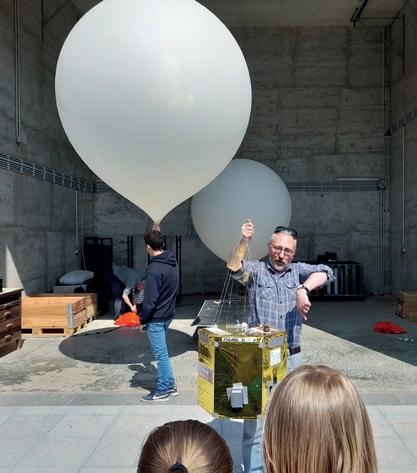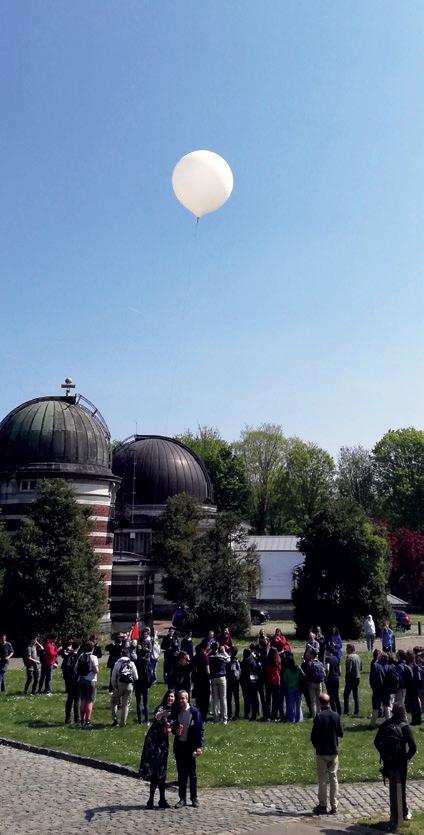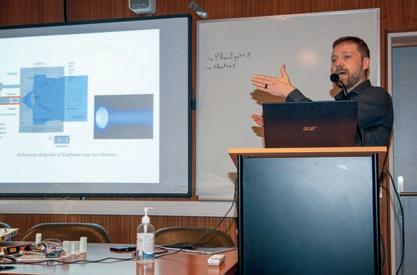
4 minute read
Asgard XI
The Asgard project is a ESERO initiative open to schools worldwide to design an experiment which is sent up to near-space on a high-altitude weather balloon from Brussels. Our team was composed of six Fifth Formers: Aarush Ranjan, Paul de Nonneville, Saadhyan Ragulan, Michael Grimaldi, Kai Vanderhoof and Leo Lenhard.
We built an experiment which measured levels of cosmic radiation at different levels in the atmosphere. Cosmic radiation is essentially a series of highenergy particles and radiation which is sent from interstellar or intergalactic space. When these hit our atmosphere, they cause a shower of particles such as protons, atomic nuclei, electrons and occasionally positrons. Our project measured these showers and their intensities with a geiger counter. To measure the altitude, we used a pressure and temperature sensor so we could calculate the altitude using the barometric formula. All of these were connected to an Arduino Nano which contained code to make the instruments take readings every 10 seconds. All of the data was stored on an SD card. We started off our project by first planning how we would gather all the data needed. There was also a mass restriction of 200g, which we ended up coming within 5 grams of. We started off with using a basic prototype geiger tube and writing its code. We tested this in the physics lab, with Mr Tretiakov very kindly lending us some of the radioactive material such as uranium glass balls, americium-241 and strontium-90. We then got to work on designing our temperature sensor code and our pressure sensor code which we didn’t have many problems with. We tested the pressure sensor by using a bell jar to create a vacuum and we tested the temperature sensor simply by pressing down on it with our fingers. Programming our SD card code was harder as we had to download different libraries to the ones pre-installed. After finishing all the code (or so we thought), we then designed and drilled our PCB. This was quite fiddly and required a lot of time. In the last session of the term, we finished soldering all of the sensors on. However, we still needed to assemble our project and do final testing. We ended up coming back in the Easter holidays to finish building and testing. In the first holiday session, we assembled our experiment however a switch we put in was soldered badly and so caused a short. On the day we were due to send it to Belgium, we tested our assembled product by putting radioactive sources near it and then placing it in a bell jar. The Geiger tube and pressure sensor worked separately, however the bell jar blocked a lot of radiation, so we still weren’t sure

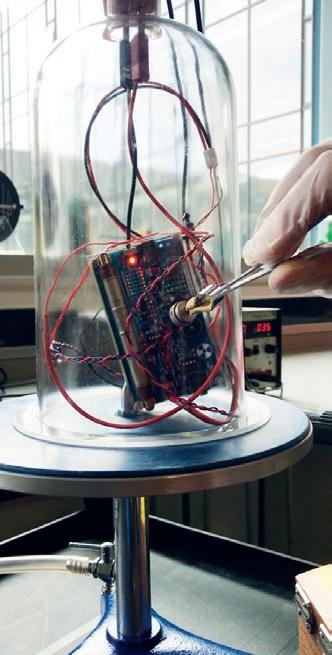
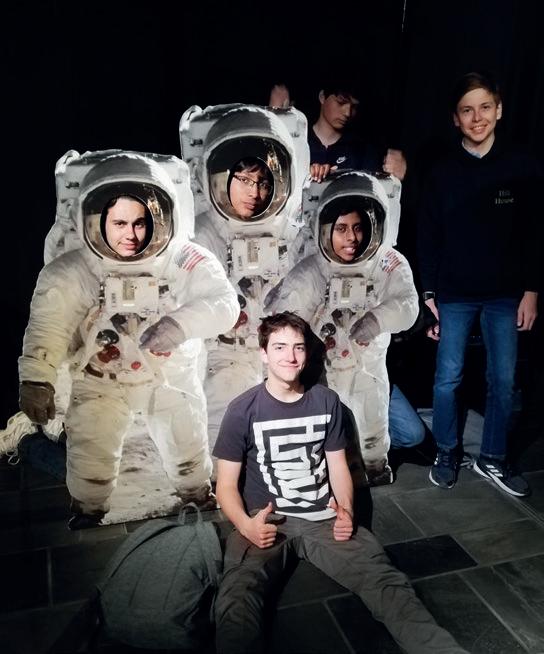
how well it would detect radiation when at low pressure before we reached our deadline to send it to Belgium, and weren’t sure that our project would be fully successful.
Arranging the trip just after the pandemic presented many hurdles, however in the end everything went smoothly. On our first day in Brussels, we joined 14 other schools from across Europe. Each school did a presentation on their experiments and what their hypotheses were. Some examples were a muon detection system, light spectroscopy and measuring wind speed. Then our very own teacher, Dr Patterson, was the invited guest speaker and gave an engaging talk on gas discharge in near-space which we all enjoyed. It was a busy day as in the afternoon we went to the Atomium and a planetarium, both of which were great experiences.
The second day of our trip was launch day. We all went to the Royal Meteorological Society of Belgium, where there were many workshops and talks by the scientists working there. Later that night, we received a copy of our results via email and immediately started working on initial data processing and on the concluding presentation that we would give the next day, working late into the night. We found that our experiment had worked perfectly and gave results in line with what we expected. On the last day, all the schools gave their concluding presentations and went to the host school (Sint Pieterscollege) for a celebratory lunch. We also did some sightseeing, and saw places like St Michael’s and St Gudula’s Cathedral and the old city (which had brilliant Belgian waffles and chocolate).
We all really enjoyed this once-in-a-lifetime experience. Meeting students from other schools, as well as listening to the experience of over 10 different scientists really made it a memorable experience. For those who are joining the Fifth Form next year and are interested in this sort of thing, we all would very highly recommend joining next year’s team. We would like to thank Dr Patterson for organising the whole project, Mr Tretiakov for allowing us access to the Physics department’s store of radioactive sources and accompanying us on the trip, Dr Gaine for assisting us in our project processing the results and also accompanying us and finally Erik de Schrijver of Sint-Pieterscollege in Brussels for organising Asgard. ❚
